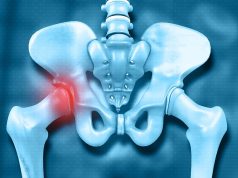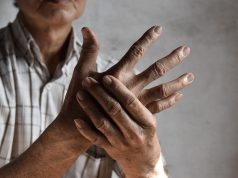Machine learning algorithm finds nonlocalized joint involvement increases risk for poor outcomes
MONDAY, March 11, 2019 (HealthDay News) — An algorithm that can classify patients with juvenile idiopathic arthritis (JIA) into seven distinct groups based on patterns of swollen or painful joints in the body can help predict disease course, according to a study published online Feb. 26 in PLOS Medicine.
Simon W.M. Eng, from the University of Toronto, and colleagues used unsupervised machine learning to uncover data-driven joint patterns that predict clinical phenotype and disease trajectories. Data were analyzed from 640 discovery patients with newly diagnosed JIA who were followed serially for five years and who were treatment-naive except for nonsteroidal anti-inflammatory drugs.
The researchers found that the model identified seven joint patterns at presentation among the discovery cohort: pelvic girdle (57 patients), fingers (25), wrists (114), toes (48), ankles (106), knees (283), and indistinct (seven). These patterns differed from clinical subtypes and were validated in an external cohort of 119 patients. The discovery cohort was further subdivided by degree of localization — the percentage of their active joints aligning with their assigned pattern: localized (≥90 percent; 359 patients), partially localized (60 to 90 percent; 124), or extended (<60 percent; 157). Baseline patterns were more often maintained by localized patients versus nonlocalized patients during a five-year follow-up period.
“Our study supports both the continued collection of detailed joint involvement and the inclusion of patterns and degrees of localization to stratify patients and inform treatment decisions,” the authors write.
Copyright © 2019 HealthDay. All rights reserved.








